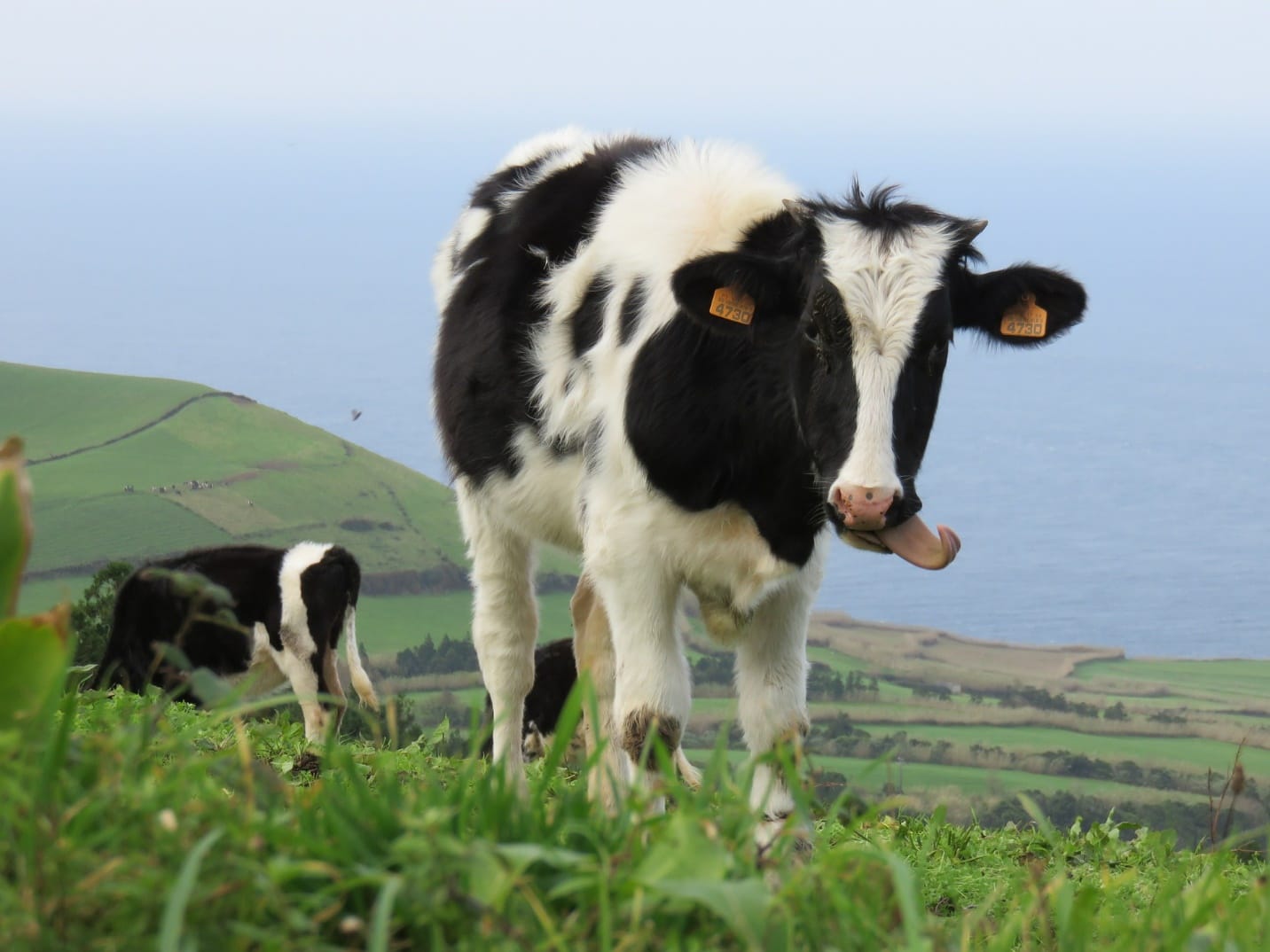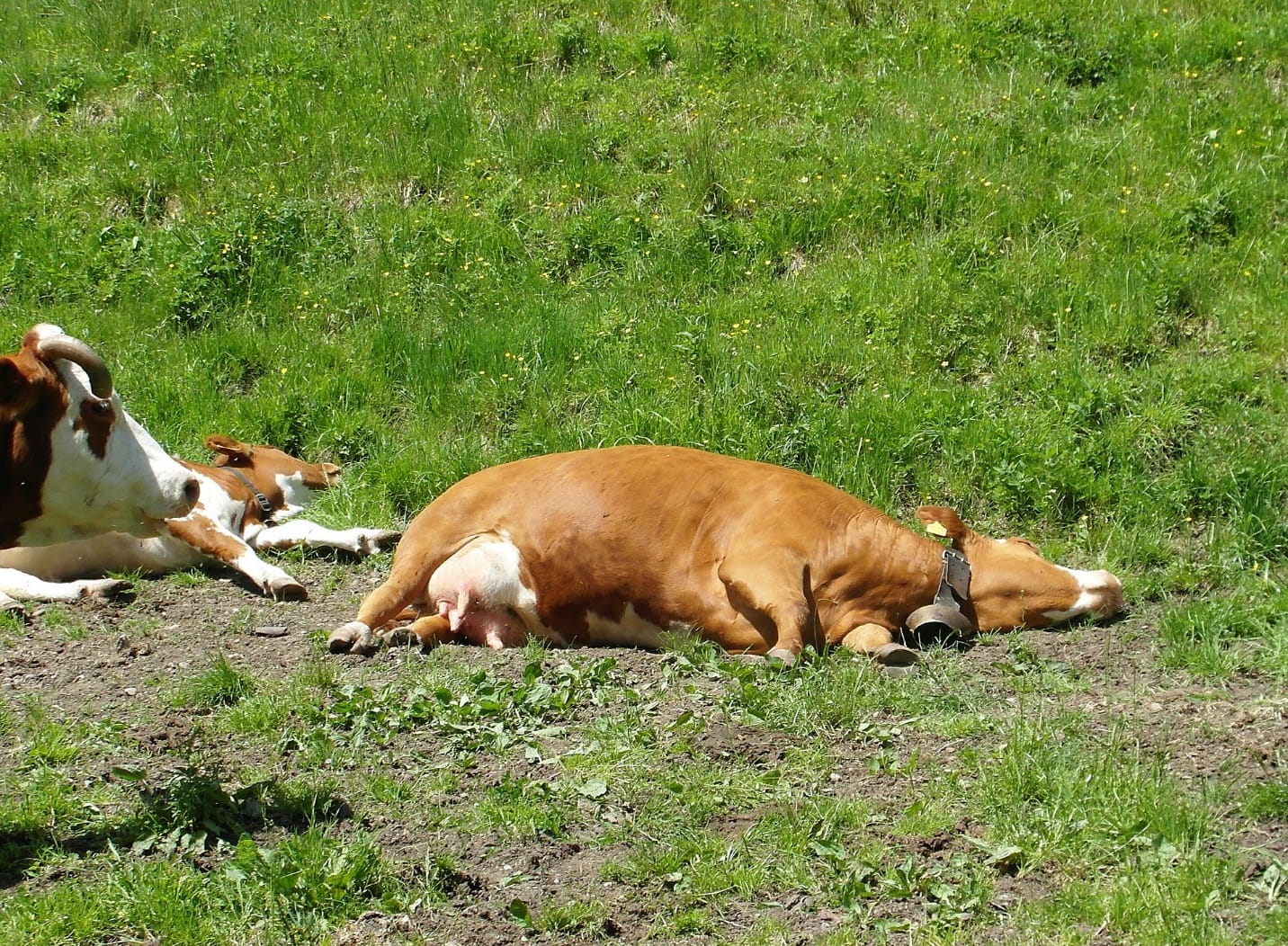Cows are generally calm creatures. They like to saunter about minding their own business and they don’t really get ruffled for most things. They prefer to stay cool and take life easy.
Which is probably why they don’t take kindly to heat. It gets them all hot and bothered and apart from these surface-level annoyances, it could prove to be very, very detrimental to the health of your cows, and even fatal.
Heat stress is serious stuff.
In this article, we’re going to discuss heat stress, what you can do to keep your cows chilled out, and how to identify it early on.
Sweltering heat during the summers is one of the major factors that affect dairy cow production. Heat stress causes both physiological and behavioural changes in affected cows like increased rates of respiration, high body temperatures, increased water intake and lots more time just standing, in a bid to lower their body temperatures.
Apart from the decrease in milk yield, cows could lose about 2.5 kgs for every day of heat stress. The undue stress caused on the body results in lower fat and lower protein in the milk, lower fertility rates and early embryonic loss.
Now you would think that cows would generally head towards the shady/breezy spots when they’re feeling hot. But as herd animals, they tend to group during tough situations and you may have spotted cows with heat stress in groups many a time. All this hanging out together also causes an increase in heat and body temperatures.
Inevitably, heat stress if not managed well can affect the health and temperament of each individual cow, thereby hindering the farm’s profits.
But the good news is that heat stress (if identified early and nipped in the bud, along with measures to ensure that your animals are living an easy-breezy life) can easily be battled.
Heat stress in high yielding cows:
Did you know? High -yielding cows are the ones most affected by heat stress?
Which means that the most profitable animals on your farms are the ones most likely to get targeted first.
Cows produce a whole lot of heat during ruminal fermentation, digestion and metabolism processes. Now, this heat must be released so that the cow’s internal body temperatures remain constant.
So how does an animal dissipate heat?
- Evaporative cooling: Through sweating and panting
- Conduction: By coming into direct contact with cold objects
- Convection: Heat dissipates into the surrounding moving air
When the temperature is on the rise, the animal finds it difficult to dissipate heat through the above methods and so the cow’s body automatically starts to respond with defense mechanisms including increasing respiration rates, decreasing movement, more water intake, etc.
This in turn all affect the health of the cow and their production rates.
The more milk cows yield, the higher their metabolic rate. The more amount of heat they produce, the more amount of heat they must dissipate from their bodies.
And that’s why it’s the high yielding cows that are most susceptible to heat stress.
During hot summer months, milk production can come down by even 50%. Data has shown that only 10% - 20% inseminations in heat-stressed cows result in pregnancies.
So, first things first.
How do you know if your cows are undergoing heat stress?
Here are some warning signs you should watch out for:
- Rapid shallow breathing – sometimes open-mouthed with tongue hanging out
- Sweating profusely
- 10% decrease in milk production
- A decrease in feed intake
Generally, when the weatherman tells you that the temperature is rising above 26 degrees Celsius, you’d do good to kick in your warm-weather arsenal and keep one eye on your cows at all times.

A humidity index of more than 90% will cause severe signs of heat stress in the cows that produce a high milk yield and moderate signs of heat stress in the lower-producing cows.
26 degree Celsius to 32 degree Celsius:
At this temperature, your cows could start exhibiting moderate signs of heat stress. The humidity at this temperature would be around 50% - 90%. The moderate signs here include speedy shallow breathing, a lot of sweating and about a 10% decrease in the production of milk and cows feed intake too.
32 degree Celsius to 37 degree Celsius:
As the weather rises to this temperature, the humidity continues to remain about the same (50% - 90%). In this stage, the cows start to show a severe dip in the milk yield usually more than 25%. Feed intake will also decrease and the cows start to show more severe signs like open-mouthed breathing with the tongue hanging out.
Rectal temperatures and respiratory rates are clear indicators:
If you’re a bit confused about whether you’re animals are just hot or affected by heat stress, take the rectal temperatures of at least 10 cows. If more than 7 cows have temperatures above 103 degrees Fahrenheit, then it means the cows are going through heat stress.
You can also check the respiratory rates of the same 10 cows. If the respiratory rates are more than 80 breaths per minute on at least 7 of the cows, they are undergoing heat stress.
If more than 5 out of 10 cows have respiratory rates that amount to more than 100 breaths per minute, immediate action has to be taken to reduce heat stress.
During severe heat stress, food intake and milk production can decrease by more than 25% and the weak cattle may even die.
Heat stress vs. heatstroke:
We’ve all heard of heatstrokes – it’s usually common among humans who live in the tropics. But did you know that cows can get heat strokes too?
So, we already told you (or you may have experienced it yourselves) about how a cow would have quick, shallow breaths and open-mouthed panting if exhibiting heat stress.
In heat strokes, however, cows will be down and not get up. It will appear depressed and to be in a coma-like state. The pupils of the eyes will be dilated and the cow would be hot to the touch. Unlike heat-stressed animals, cows with heat stroke will not drink water. They also lose control of normal bodily functions – it will not stand, drink water and will probably be lying still on the ground.

An important thing to remember is that milk-fever cows and coliform-mastitis cows too showcase the same signs as cows with heatstroke so you will need to check their quarters for watery secretions so as to not confuse the two.
How to treat heatstroke?
You know that cows with milk fever or coliform mastitis are pumped with electrolytes via the veins. Heatstroke and heat stress animals are treated by hosing down the animals with cool water continuously for about 20 – 30 minutes.
The direction is head to tail, and more of the hosing is done right at the back of the head since that is where the cow’s temperature regulation centre is.
Cows with heat stress find this very soothing and will often stand still. You won’t even need to tie them up!
When the hosing doesn’t work, intravenous fluids (5+ litres of lactated ringers solution, 500cc dextrose and 200cc 8.4 percent sodium bicarbonate) will work well for heatstroke but only after using a hose.
If you’re unable to get hold of a hose, you can move your cow onto a plywood board or tractor bucket to near where the hose is – it’s important to act immediately.
Do not swap out a hose for a cold sponge bath or pouring buckets of cold water onto the cows. This is not at all as effective as a good ol’ hose. When a very hot animal is hosed down in the right way for 20 – 20 minutes, you will find that the temperature has dropped down to 103 degrees Fahrenheit which is an indication that your timely action has worked!
We can’t control the weather. But we sure can control the infrastructure of our farm and the health of our cows. And if you’re reading this article, then that means you care for your cows and well, that’s half the battle won, isn’t it!
So the next time the hot summer months are around the corner, just nip heat stress in the bud before it has a chance to do any permanent damage.
If interested to learn more, check out how you can prevent heat stress in your dairy cows.
Until we meet again, happy farming!
- The Dedicated Team of Pasture.io, 2021-01-11